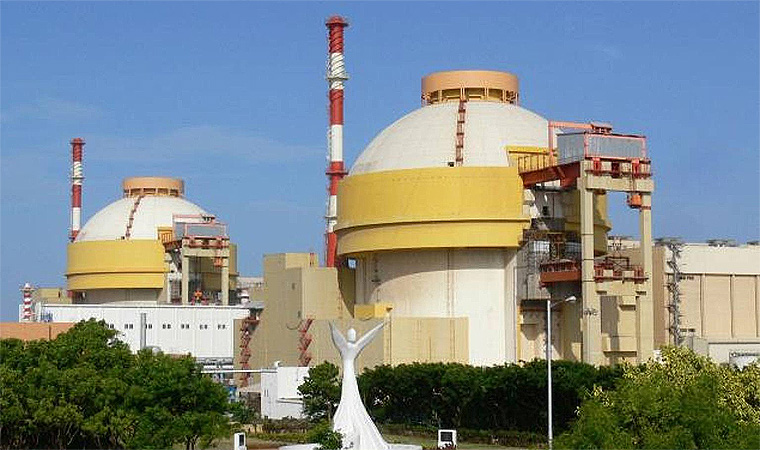
Safety Technology
back to contentsAlong with traditional active safety systems it involves various design solutions based on “passive” principles, which brings the project closer to the IV generation. One of them is high pressure quick boron injection system. It is meant for reactor power cutback and its turning to pre-critical condition in case of accidents with emergency protection failure. The system consists of four independent channels. Their main elements are containers with boron solution, parallel-connected to the main circulation pump. There are closed quick valves at the pipelines connecting the system containers with the primary circuit. In case of alarm signal and its failure the valves open and the boron solution gets pushed by coolant out from containers into the primary circuit and further into reactor.
The system was created by Gidropress, Rosatom’s experimental design office (designer of nuclear reactors, including those for atomic submarines and VVER energy reactors). It is unique and has no prototypes.
The Gidropress specialists took active part in construction, pre-commissioning activities and start up of the Kudankulam first power unit. The high pressure quick boron injection system was first field-tested during its physical start-up. The experiment was a success.
Ready for start-up
The Kudankulam NPP with two VVER-1000 reactor systems with the total capacity of 2000 MW is an important subject of Russian-Indian partnership, being built with Russia’s technical assistance. Russia’s liabilities are: training of Hindu personnel, developing engineering, commissioning and operational documentation, NPP building supervision, equipment and material supply from Russia and the third countries, technical support while assembling and putting into operation of the NPP.
Nuclear Power Corporation of India hopes the first unit of the Kudankulam NPP will be connected to the mains by the end of August.
“We gave our permission for power unit 1 improvement up to 50% of the installed capacity (1000 MW)”, – said Ramdas Bhattacharya, the head of Atomic Energy Regulatory Board. Soon after obtaining the permission the Nuclear Power Corporation of India started working on the power improvement of unit 1 to 500 MW.
“We hope we’ll be able to connect the reactor to the net with the power of 500 MW this month”, – noted R.S. Sundar, the Site Director of the Kudankulam NPP project.




